Introduction
Soup, a culinary masterpiece that transcends borders and cultures, holds a special place in the hearts and stomachs of many. It is a dish that can be both comforting and elegant, simple and sophisticated. Among the myriad of soup varieties, Pork Ribs and Shepherd’s Purse Soup stands out for its unique blend of flavors and nutritional benefits. This article will guide you through the step-by-step process of making this delightful soup, ensuring that you can recreate this culinary gem in your own kitchen.
Understanding the Ingredients
Before diving into the recipe, it’s crucial to understand the ingredients that make Pork Ribs and Shepherd’s Purse Soup so special.
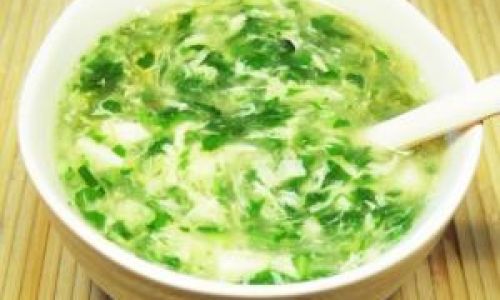
Pork Ribs:
Pork ribs are a cut of meat taken from the pig’s ribcage. They are known for their tender texture and rich flavor, making them an excellent choice for slow-cooking dishes like soups. The marbling of fat within the meat adds to its juiciness and depth of flavor.
Shepherd’s Purse (Capsella Bursa-Pastoris):
Shepherd’s purse is a small, leafy green vegetable that belongs to the Brassicaceae family, which also includes broccoli, cabbage, and kale. It has a slightly peppery taste and a nutritious profile rich in vitamins A, C, and K, as well as minerals like calcium and iron. Shepherd’s purse is often overlooked in modern cuisine but is a staple in traditional medicine and cooking, particularly in Asian and European cultures.
Aromatics and Seasonings:
The beauty of soup lies in its layers of flavor. Aromatics such as garlic, ginger, and onions form the foundation, while seasonings like salt, pepper, and soy sauce add depth. Herbs like cilantro or parsley can be used for garnish, enhancing both the taste and presentation.
Broth:
The broth is the soul of the soup. It can be made from scratch using pork bones, water, and aromatic vegetables, or you can use a high-quality store-bought broth for convenience. A good broth should be flavorful, clear, and not overly salty.
Additional Vegetables:
To round out the soup, you can add other vegetables such as carrots, celery, and potatoes. These vegetables not only add texture and color but also contribute additional nutrients and flavors.
Preparing the Ingredients
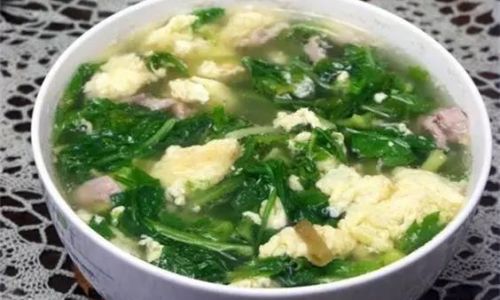
Now that you understand the ingredients, let’s move on to the preparation.
Pork Ribs Preparation:
- Choose fresh or high-quality frozen pork ribs.
- Rinse the ribs under cold running water to remove any blood or impurities.
- Pat them dry using paper towels.
- You can opt to cut the ribs into smaller pieces for easier handling and faster cooking, but this is optional.
Shepherd’s Purse Preparation:
- Rinse the shepherd’s purse leaves thoroughly under cold water.
- Pat them dry and chop them finely. The finer the chop, the more the flavor will infuse into the soup.
- Note that the stems can be used as well, but they may need to be cooked longer to soften.
Aromatics and Seasonings:
- Peel and finely chop the garlic, ginger, and onions.
- Measure out the salt, pepper, and soy sauce.
- Prepare any fresh herbs you plan to use for garnish.
Broth Preparation:
- If making homemade broth, start by roasting the pork bones in the oven until they are golden brown. This will add depth to the broth.
- In a large pot, combine the roasted bones, water, and aromatic vegetables like carrots, celery, and onions.
- Simmer the broth for at least 4-6 hours, skimming any impurities that rise to the surface.
- Strain the broth, discarding the solids, and set it aside.
Additional Vegetables:
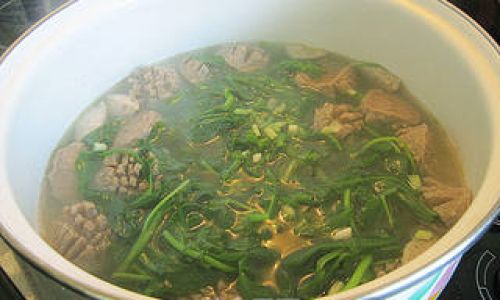
- Peel and chop the carrots, celery, and potatoes into bite-sized pieces.
- Ensure they are evenly sized for uniform cooking.
Cooking the Soup
With all the ingredients prepared, it’s time to cook the soup.
Step 1: Sear the Pork Ribs
- Heat a large pot or Dutch oven over medium-high heat.
- Add a tablespoon of oil and, once hot, sear the pork ribs on all sides until they are browned. This will lock in juices and add flavor to the soup.
- Remove the ribs from the pot and set them aside.
Step 2: Sauté the Aromatics
- In the same pot, add the chopped garlic, ginger, and onions.
- Sauté until they are fragrant and the onions are translucent.
Step 3: Combine Ingredients
- Return the seared pork ribs to the pot.
- Add the chopped carrots, celery, and potatoes.
- Pour in the prepared broth, ensuring it covers all the ingredients by at least an inch.
- Bring the mixture to a boil, then reduce the heat to a simmer.
Step 4: Cook the Soup
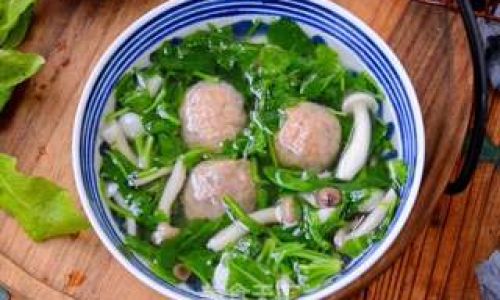
- Allow the soup to simmer gently for about 1.5 to 2 hours, or until the pork ribs are tender and the vegetables are cooked through.
- Skim any foam or impurities that rise to the surface during cooking.
Step 5: Add Shepherd’s Purse
- About 15-20 minutes before the soup is done, add the chopped shepherd’s purse.
- The leaves will cook quickly, so it’s important to add them towards the end to preserve their bright color and fresh flavor.
Step 6: Season and Taste
- Once the soup is cooked, season it with salt, pepper, and a splash of soy sauce to taste.
- Taste the soup and adjust the seasoning as needed.
Step 7: Garnish and Serve
- Ladle the soup into bowls.
- Garnish with freshly chopped cilantro or parsley.
- Serve hot, with a side of steamed rice or crusty bread if desired.
Tips for Perfecting Your Soup
- Quality Ingredients: Always use fresh, high-quality ingredients. This will make a significant difference in the final taste of your soup.
- Patience: Slow cooking is key to developing flavors. Don’t rush the simmering process.
- Taste and Adjust: Always taste your soup before serving and adjust the seasoning accordingly. Remember, you can always add more seasoning, but you can’t take it away.
- Texture: Ensure the vegetables and meat are cooked to your preferred texture. Some people prefer softer vegetables, while others like a bit of crunch.
- Garnish: Don’t underestimate the power of garnish. Fresh herbs can elevate the presentation and taste of your soup.
Nutritional Benefits and Variations
Pork Ribs and Shepherd’s Purse Soup is not only delicious but also packed with nutritional benefits. The pork ribs provide a good source of protein and essential fats, while the shepherd’s purse is rich in vitamins and minerals. The added vegetables round out the meal, making it a balanced and satisfying dish.
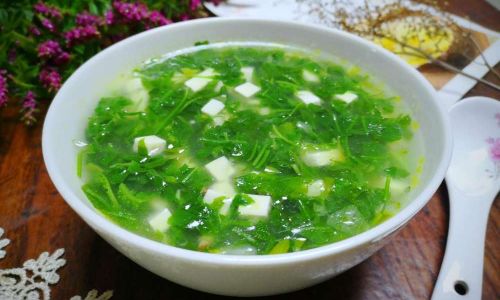
For those looking to make the soup more health-conscious, consider the following variations:
- Low-Sodium: Use low-sodium broth and reduce the amount of salt added.
- Vegetarian/Vegan: Substitute the pork ribs with vegetarian protein sources like tofu, tempeh, or legumes. Use vegetable broth instead of pork broth.
- Gluten-Free: Ensure all ingredients are gluten-free, and use tamari or coconut aminos instead of soy sauce if needed.
- Dairy-Free: This soup is naturally dairy-free, making it a great option for those with dairy allergies or intolerances.
Conclusion
Pork Ribs and Shepherd’s Purse Soup is a delightful and nutritious dish that combines the richness of pork ribs with the fresh, peppery taste of shepherd’s purse. By following the steps outlined in this article, you can create a hearty and satisfying soup that will warm your soul and nourish your body. Whether you’re cooking for a family dinner, a friend’s gathering, or just treating yourself, this soup is sure to impress. So, gather your ingredients, roll up your sleeves, and start making your very own Pork Ribs and Shepherd’s Purse Soup today!
This article has provided a comprehensive guide to making Pork Ribs and Shepherd’s Purse Soup, from understanding the ingredients to preparing and cooking the soup, and even tips for perfecting your dish and exploring nutritional variations. With this information, you should feel confident in your ability to create a delicious and satisfying soup that will delight your taste buds and nourish your body. Enjoy your culinary journey!
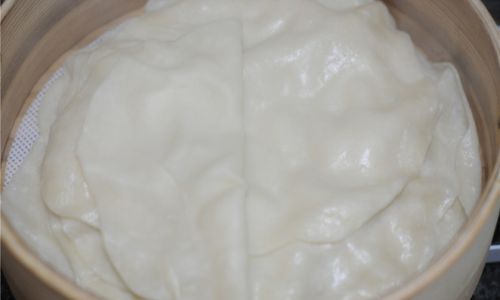





0 comments